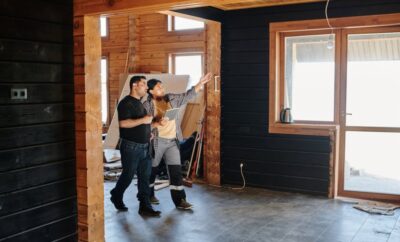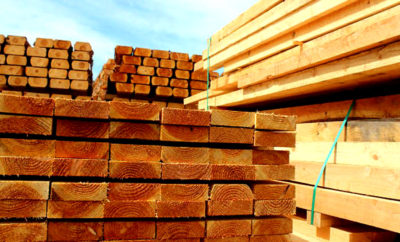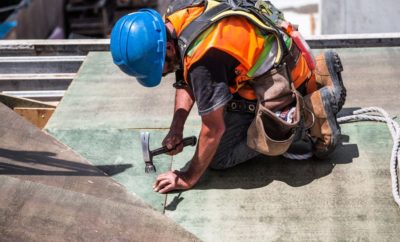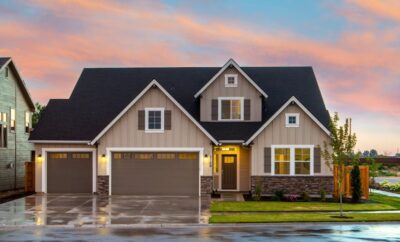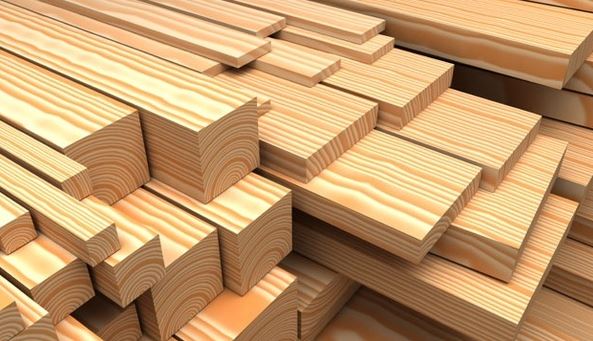
What is Lumber?
Lumber or timber is a type of wood that has been processed into beams and planks, a stage in the process of wood production. Lumber is mainly used for structural purposes but has many other uses as well.
There are two main types of lumber. It may be supplied either rough-sawn, or surfaced on one or more of its faces. Besides pulpwood, rough lumber is the raw material for furniture-making and other items requiring additional cutting and shaping. It is available in many species, usually hardwoods; but it is also readily available in softwoods, such as white pine and red pine, because of their low cost.
Finished lumber is supplied in standard sizes, mostly for the construction industry – primarily softwood, from coniferous species, including pine, fir and spruce (collectively spruce-pine-fir), cedar, and hemlock, but also some hardwood, for high-grade flooring. It is more commonly made from softwood than hardwoods, and 80% of lumber comes from softwood.
What is Dimensional Lumber
Dimensional lumber is lumber that is cut to standardized width and depth, specified in inches. Carpenters extensively use dimensional lumber in framing wooden buildings.
Common sizes include 2×4, 2×6, and 4×4.
The length of a board is usually specified separately from the width and depth.
It is thus possible to find 2×4s that are four, eight, and twelve feet in length.
In Canada and the United States, the standard lengths of lumber are 6, 8, 10, 12, 14, 16, 18, 20, 22 and 24 feet (1.83, 2.44, 3.05, 3.66, 4.27, 4.88, 5.49, 6.10, 6.71 and 7.32 meters).
For wall framing, “stud” or “precut” sizes are available, and are commonly used.
For an eight-, nine-, or ten-foot ceiling height, studs are available in 92 5⁄8 inches (2.35 m), 104 5⁄8 inches (2.66 m), and 116 5⁄8 inches (2.96 m).
The term “stud” is used inconsistently to specify length; where the exact length matters, one must specify the length explicitly.
Types of Lumber Sawn
Plain Sawn (P/S)
Plain sawn lumber is also commonly referred to as “flat sawn”. This is the most common and widely used method of sawing.
Plain sawn lumber is produced by making the first cut on a tangent to the circumference of the log. Each additional cut is then made parallel to one before. This method produces the widest possible boards with the least amount of log waste.
Therefore, it is more economical in comparison to the other sawing techniques utilized within the industry. Plain sawn lumber offers a distinct cathedral effect to the grain on the face of the boards.
Quarter Sawn (Q/S)
Quarter sawn lumber is produced by first quartering the log followed by sawing it perpendicular to the annual growth rings.
This particular method of sawing produces a nice straight grain appearance on the face of the board. In many species, this technique of sawing makes the medullary rays visible on the face of the board in the form of “flake”.
In Mahogany, this technique produces what is commonly know as “ribbon stripe”. Quarter sawn lumber creates more log waste and therefore the end result of narrower boards in relation the plain sawn technique.
Rift Sawn (R/S)
The technique of rift sawing is very similar to that of quarter sawing producing similar limitations and advantages.
During rift sawing, the quartered log portion is turned slightly off perpendicular before cutting to not expose the medullary ray in an effort to minimize the amount of “flake” on the face of the board.
Rift sawing produces a virtually straight grain appearance on the face of the board with little to no visible “flake”. The rift sawing technique also produces a measurable amount of log waste and yields narrower boards in relation to plain sawn lumber.
Hardwood Dimensional Lumber Sizes (North America)
| Nominal (rough-sawn size) | S1S (surfaced on one side) | S2S (surfaced on two sides) |
|---|---|---|
| 1⁄2 in | 3⁄8 in (9.5 mm) | 5⁄16 in (7.9 mm) |
| 5⁄8 in | 1⁄2 in (13 mm) | 7⁄16 in (11 mm) |
| 3⁄4 in | 5⁄8 in (16 mm) | 9⁄16 in (14 mm) |
| 1 in or 4⁄4 in | 7⁄8 in (22 mm) | 13⁄16 in (21 mm) |
| 1 1⁄4 in or 5⁄4 in | 1 1⁄8 in (29 mm) | 1 1⁄16 in (27 mm) |
| 1 1⁄2 in or 6⁄4 in | 1 3⁄8 in (35 mm) | 1 5⁄16 in (33 mm) |
| 2 in or 8⁄4 in | 1 13⁄16 in (46 mm) | 1 3⁄4 inches (44 mm) |
| 3 in or 12⁄4 in | 2 13⁄16 in (71 mm) | 2 3⁄4 in (70 mm) |
| 4 in or 16⁄4 in | 3 13⁄16 in (97 mm) | 3 3⁄4 in (95 mm) |
Standard Grades of Hardwood Lumber
Hardwood grades are based on the size and number of clear pieces that can be obtained from a board when it is cut up to be used to make a product. Grades are not determined by gut reactions to what a person thinks the grade should be, but actual measurements of clear sections and definitions for defects.
Firsts and Seconds (FAS) Grade
The best and most expensive grade. Boards 6-inches and wider, 8-ft and longer. Yields 83-1/3 percent of clear face cuttings with minimum sizes of 4-inches x 5-ft , or 3-inches x 7-ft .
Board is graded from the poorer face. Suitable for fine furniture, cabinetry and applications where clear, wide boards are needed.
FAS One Face(F1F) Grade
The same as FAS except the board is graded from the better face.
Selects(SEL) Grade
Face side is FAS, back side is No. 1 Common. Boards are 4-inches and wider, 6-ft and longer.
Yields 83-1/3 percent clear face cuttings with minimum sizes of 4-inches x 5-ft , or 3-inches x 7-ft.
A cost effective substitute for FAS when only one good face is required or smaller cuttings are acceptable.
No. 1 Common Grade
A typical thrift or -inches shop-inches grade.
Boards are 3-inches and wider, 4-ft and longer.
Yields 66-2/3 percent clear face cuttings with minimum sizes of 4-inches x 2-ft , or 3-inches x 3-ft .
Provides good value, especially if relatively small pieces can be used.
No. 2A & 2B Common Grade
Boards are 3-inches and wider, 4-ft and longer.
Yields 50 percent clear face cuttings 3-inches and wider by 2-ft and longer.
Suitable for some paneling and flooring applications.
No. 3A Common Grade
Boards are 3-inches and wider, 4-ft and longer. Yields 33-1/3 percent clear face cuttings 3-inches and wider by 2-ft and longer.
Economical choice for rough utility applications:, crates, palettes, fencing, etc.
No. 3B Common Grade
Boards are 3-inches and wider, 4-ft and longer.
Yields 25 percent clear face cuttings 1-1/2-inches and wider by 2-ft and longer.
Applications same as No. 3A Common.
Select & Better Grade
The lumber graded “Select & Better” would include FAS, F1F, and Select boards. No. 2A Common and No. 2B Common may be combined as “No. 2 Common”.
There are special rules for some species and special designations for special selections or agreements between the buyer and seller.
The upper grades, FAS, F1F and SEL, are most suitable for mouldings, joinery products such as door frames, architectural interiors and furniture requiring a high percentage of long wide cuttings. It should be noticed that FAS – the highest grade – is not synonymous with being 100% clear material.
The Common grades are likely to be most suitable for the cabinet industry, most furniture parts and flooring. Explore the use of the common grades to achieve the most value considering lumber cost and yield.
Engineered lumber
Laminated veneer lumber (LVL)
LVL comes in 1 3⁄4 inch thicknesses with depths such as 9 1⁄2, 11 7⁄8, 14, 16, 18, and 24 inches, and are often doubled or tripled up. They function as beams to provide support over large spans, such as removed support walls and garage door openings, places where dimensional lumber is insufficient, and also in areas where a heavy load is bearing from a floor, wall or roof above on a somewhat short span where dimensional lumber is impractical.
This type of lumber is compromised if it is altered by holes or notches anywhere within the span or at the ends, but nails can be driven into it wherever necessary to anchor the beam or to add hangers for I-joists or dimensional lumber joists that terminate at an LVL beam.
Wooden I-joists
Sometimes called “TJI”, “Trus Joists” or “BCI”, all of which are brands of wooden I-joists, they are used for floor joists on upper floors and also in first floor conventional foundation construction on piers as opposed to slab floor construction.
They are engineered for long spans and are doubled up in places where a wall will be aligned over them, and sometimes tripled where heavy roof-loaded support walls are placed above them.
They consist of a top and bottom chord or flange made from dimensional lumber with a webbing in-between made from oriented strand board (OSB) (or, latterly, steel mesh forms which allow passage of services without cutting).
The webbing can be removed up to certain sizes or shapes according to the manufacturer’s or engineer’s specifications, but for small holes, wooden I-joists come with “knockouts”, which are perforated, pre-cut areas where holes can be made easily, typically without engineering approval.
When large holes are needed, they can typically be made in the webbing only and only in the center third of the span; the top and bottom chords lose their integrity if cut.
Sizes and shapes of the hole, and typically the placing of a hole itself, must be approved by an engineer prior to the cutting of the hole and in many areas, a sheet showing the calculations made by the engineer must be provided to the building inspection authorities before the hole will be approved.
Some I-joists are made with W-style webbing like a truss to eliminate cutting and to allow ductwork to pass through.
Finger-jointed lumber
Solid dimensional lumber lengths typically are limited to lengths of 22 to 24 feet, but can be made longer by the technique of “finger-jointing” by using small solid pieces, usually 18 to 24 inches long, and joining them together using finger joints and glue to produce lengths that can be up to 36 feet long in 2×6 size.
Finger-jointing also is predominant in precut wall studs. It is also an affordable alternative for non-structural hardwood that will be painted (staining would leave the finger-joints visible). Care is taken during construction to avoid nailing directly into a glued joint as stud breakage can occur.
Glulam beams
Created from 2×4 or 2×6 stock by gluing the faces together to create beams such as 4×12 or 6×16. As such, a beam acts as one larger piece of lumber – thus eliminating the need to harvest larger, older trees for the same size beam.
Manufactured trusses
Trusses are used in home construction as a pre-fabricated replacement for roof rafters and ceiling joists (stick-framing). It is seen as an easier installation and a better solution for supporting roofs than the use of dimensional lumber’s struts and purlins as bracing.
In the southern U.S. and elsewhere, stick-framing with dimensional lumber roof support is still predominant. The main drawbacks of trusses are reduced attic space, time required for engineering and ordering, and a cost higher than the dimensional lumber needed if the same project were conventionally framed.
The advantages are significantly reduced labor costs (installation is faster than conventional framing), consistency, and overall schedule savings.


